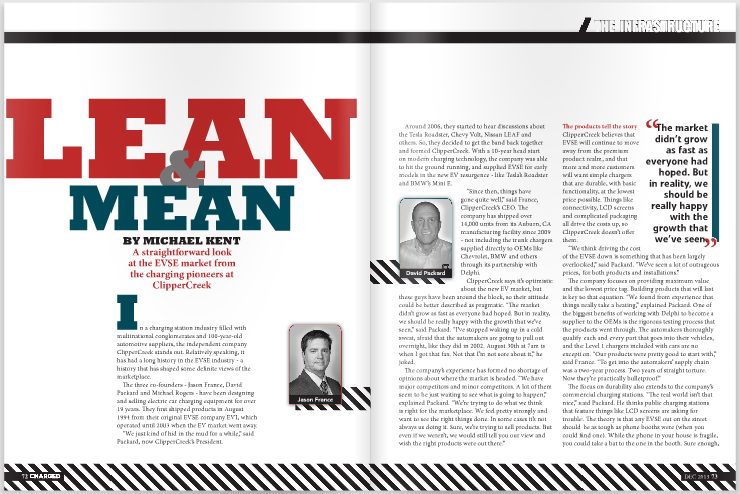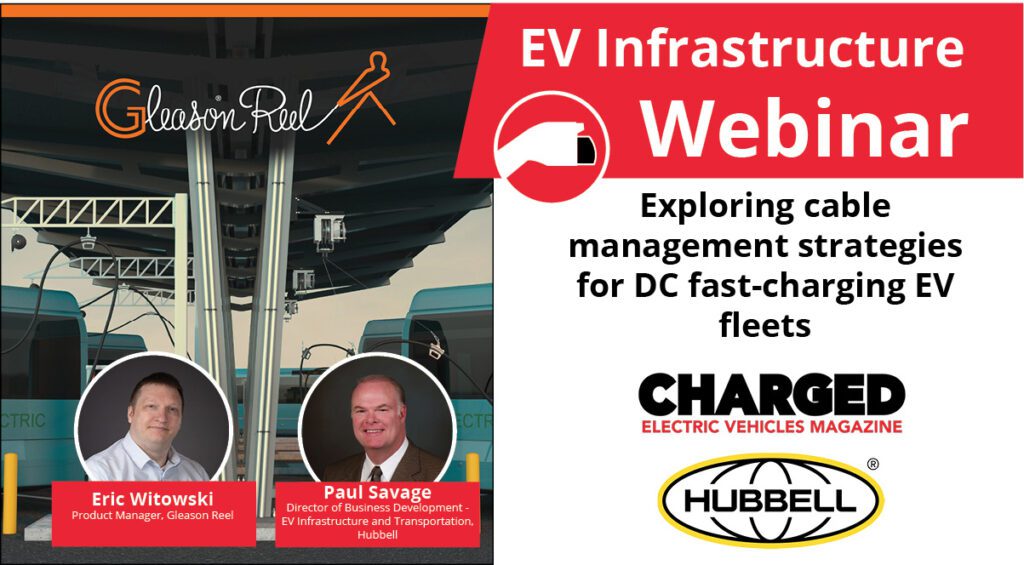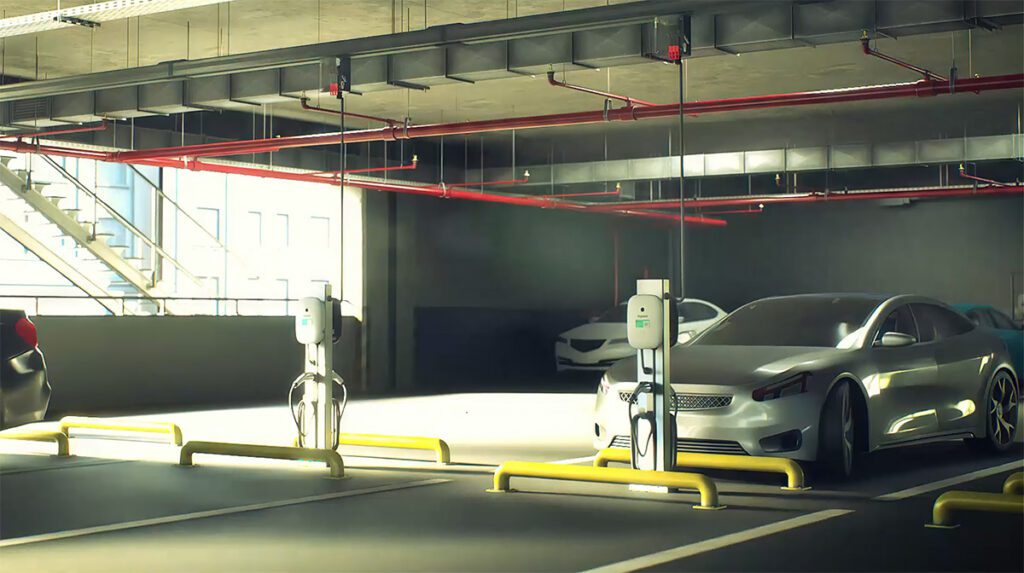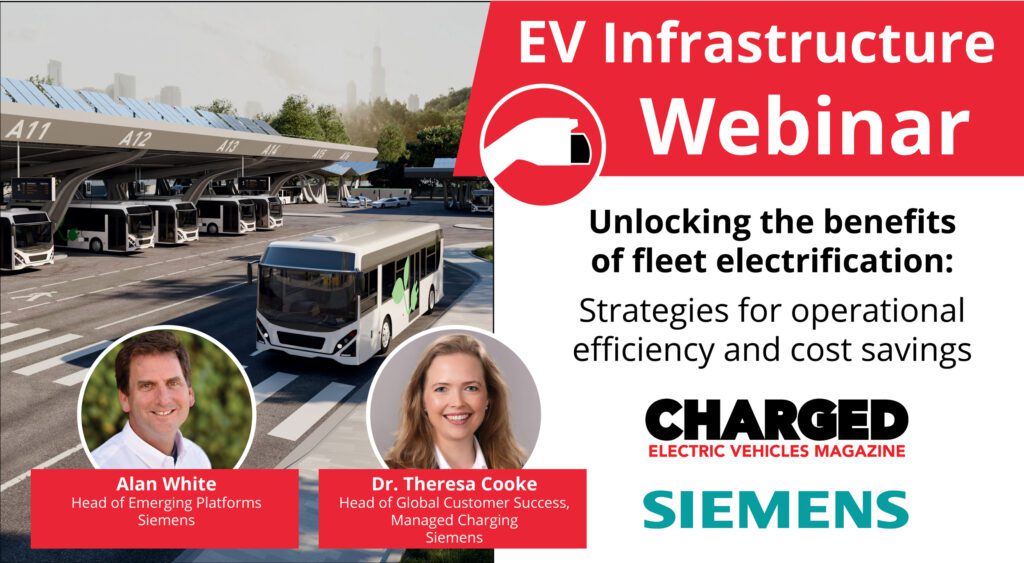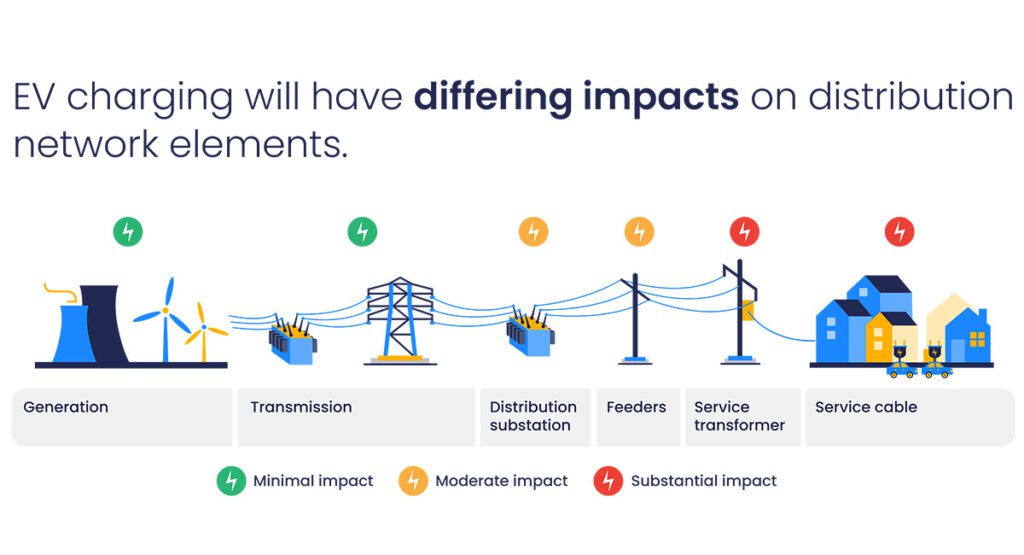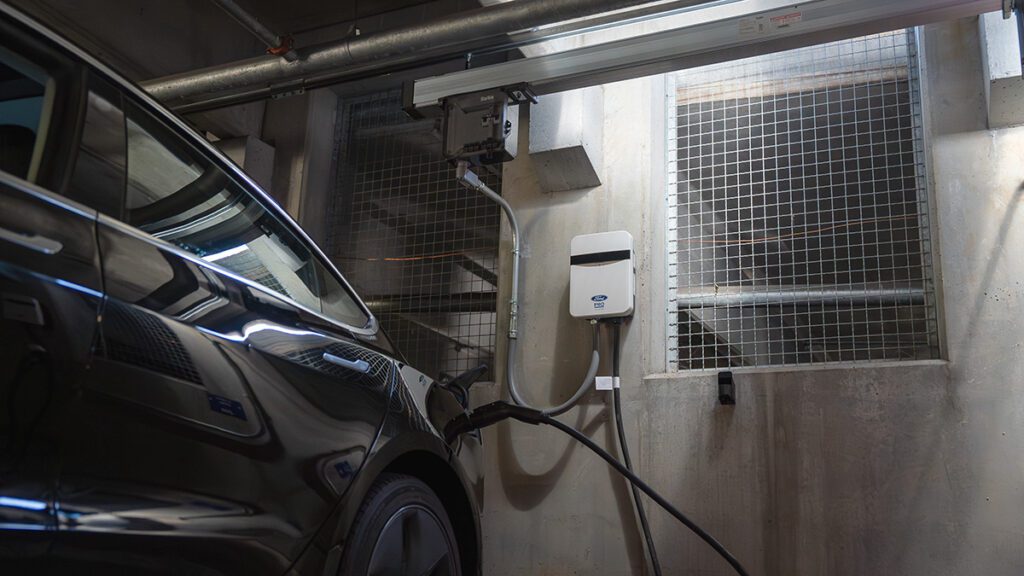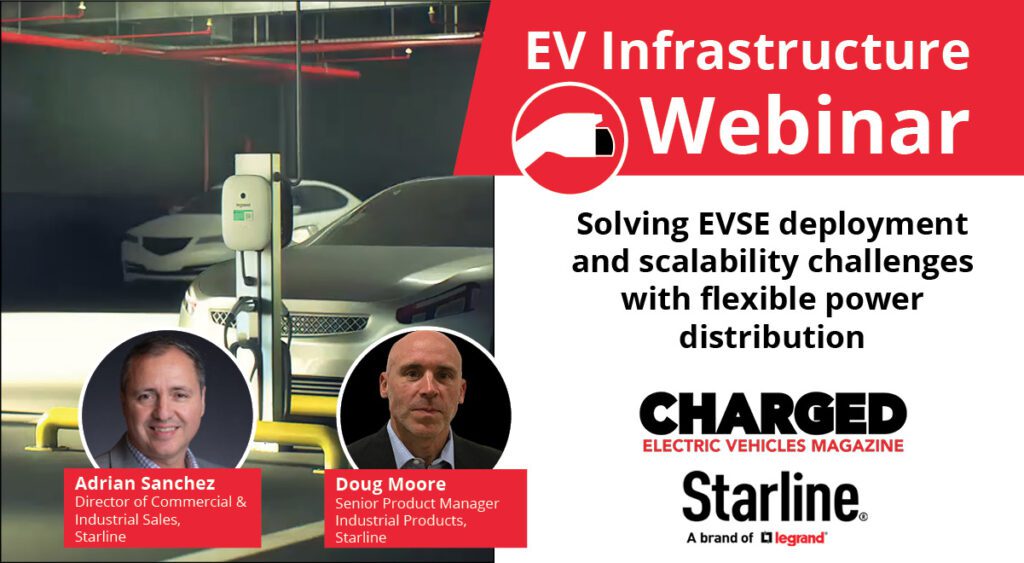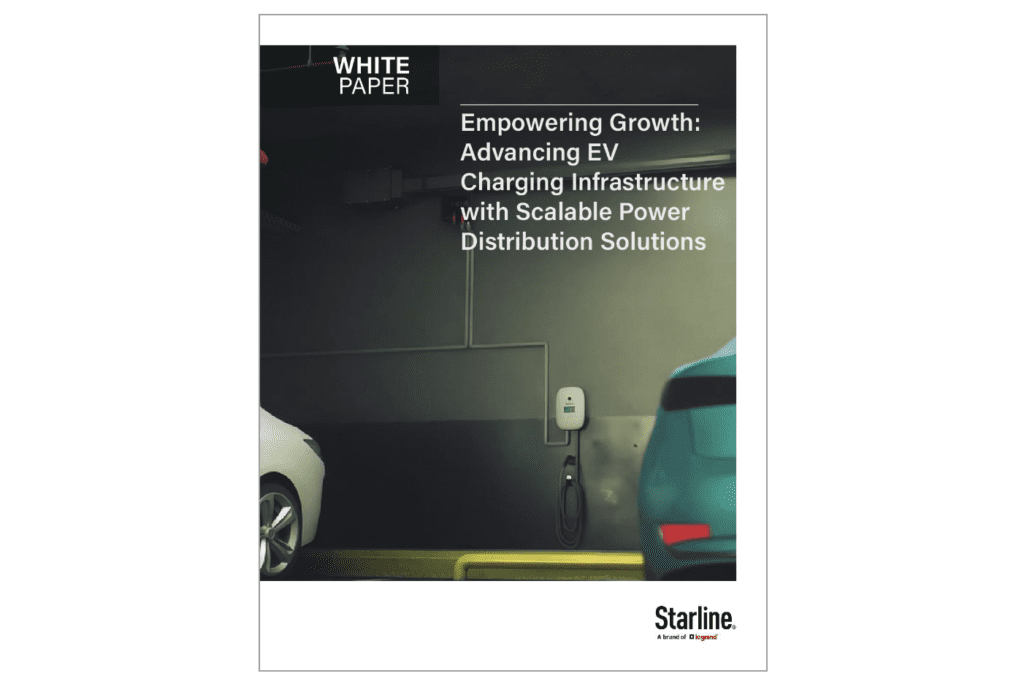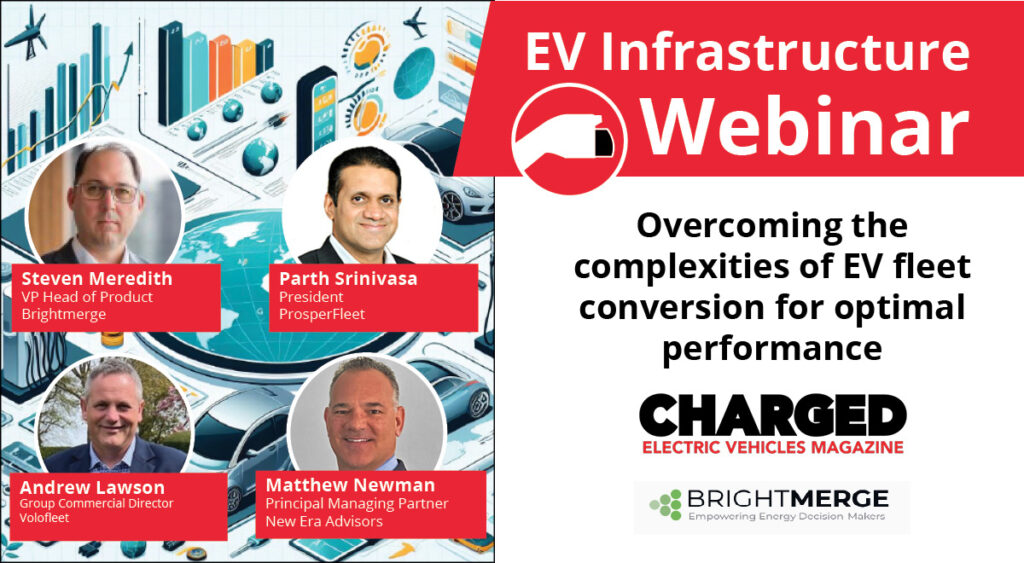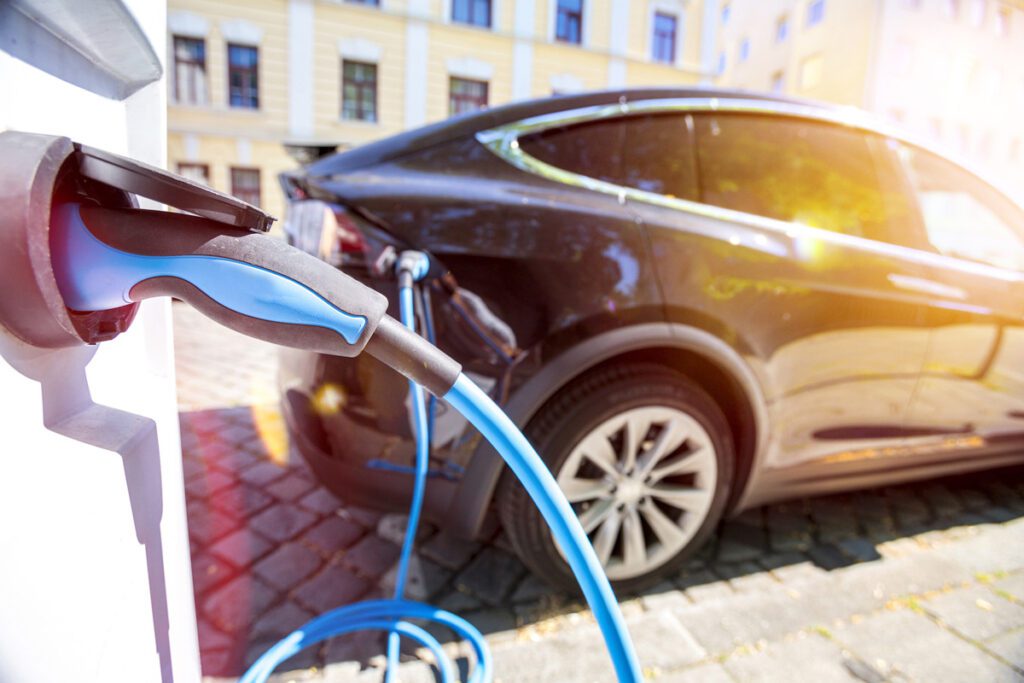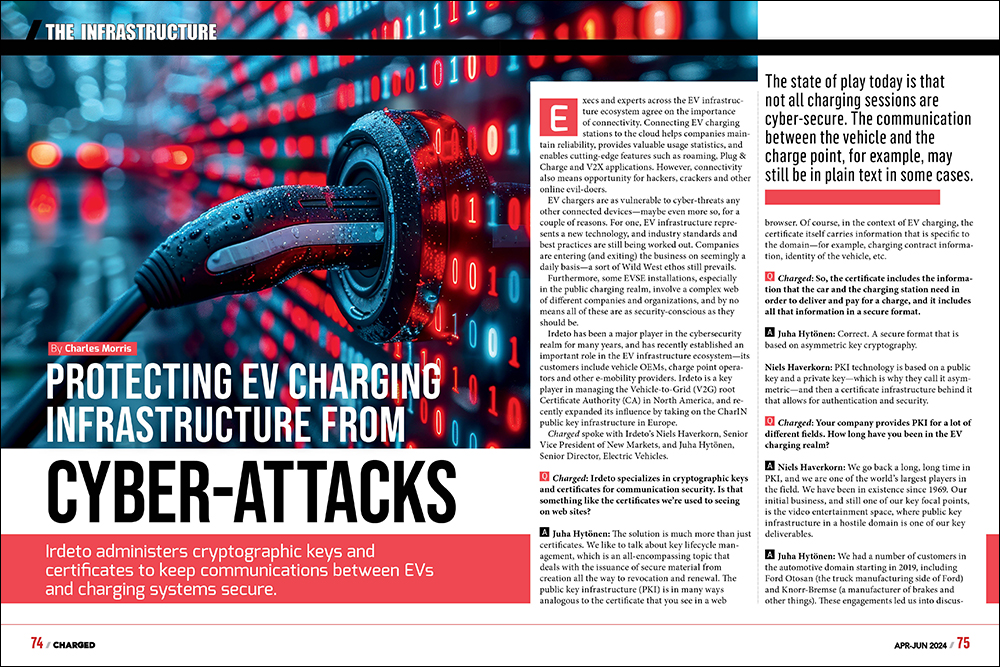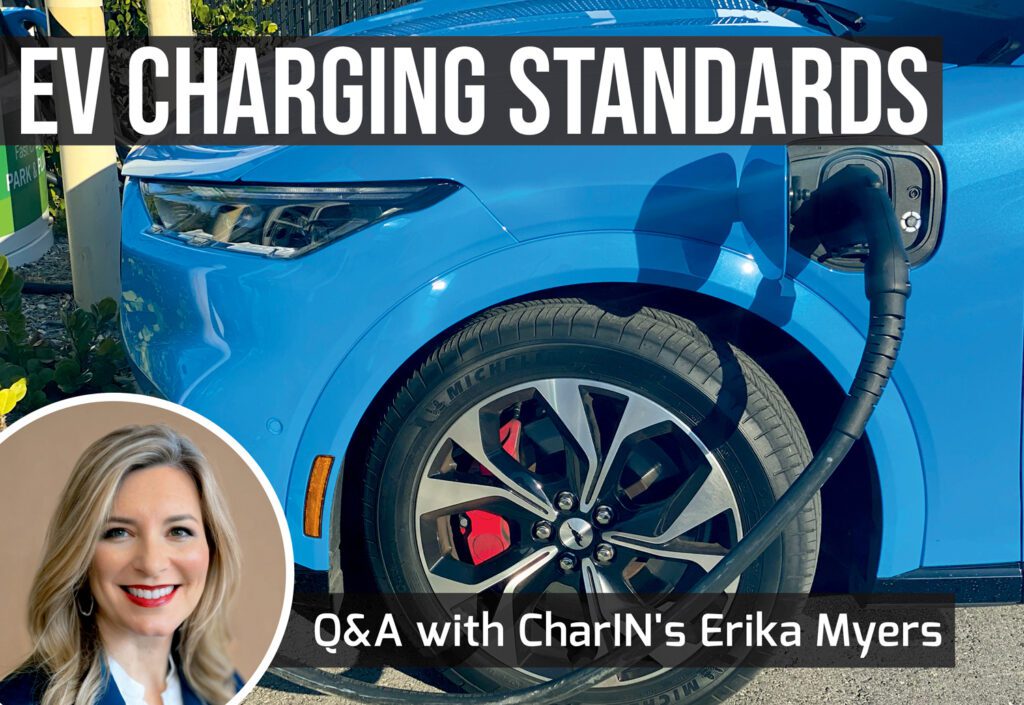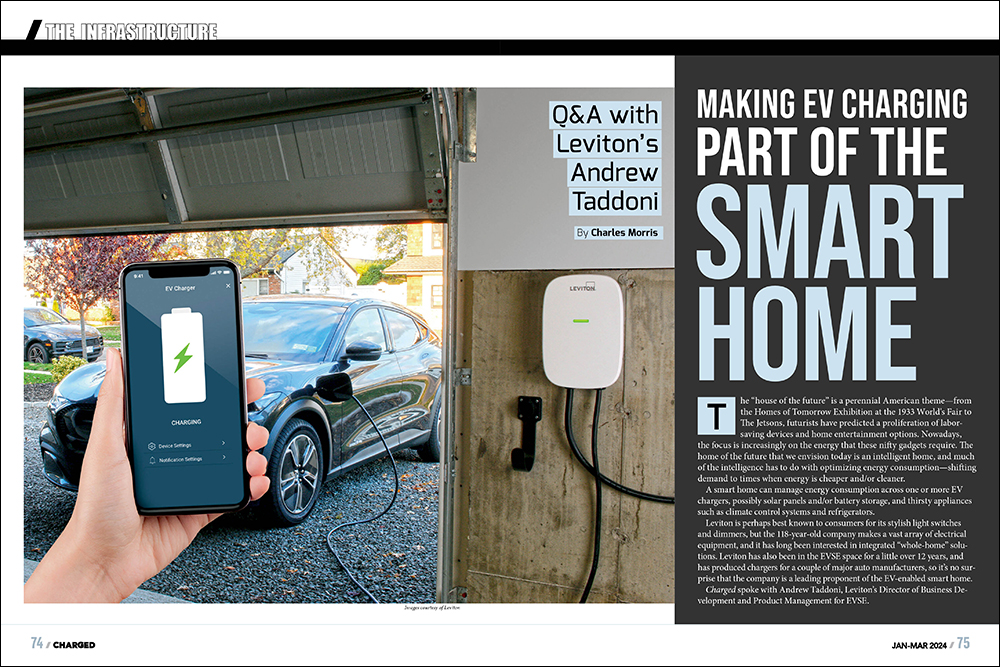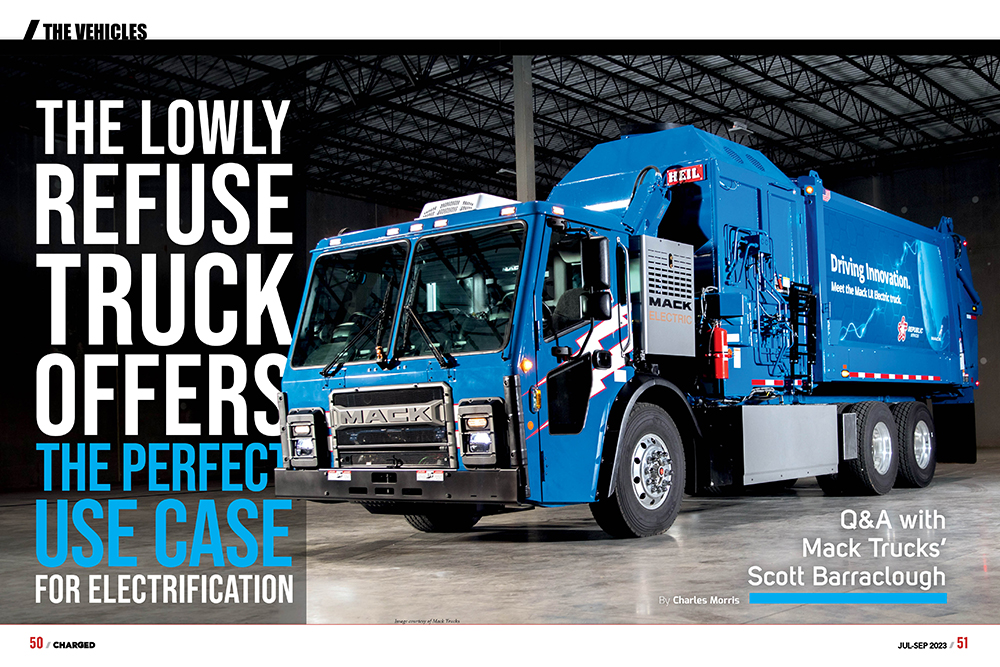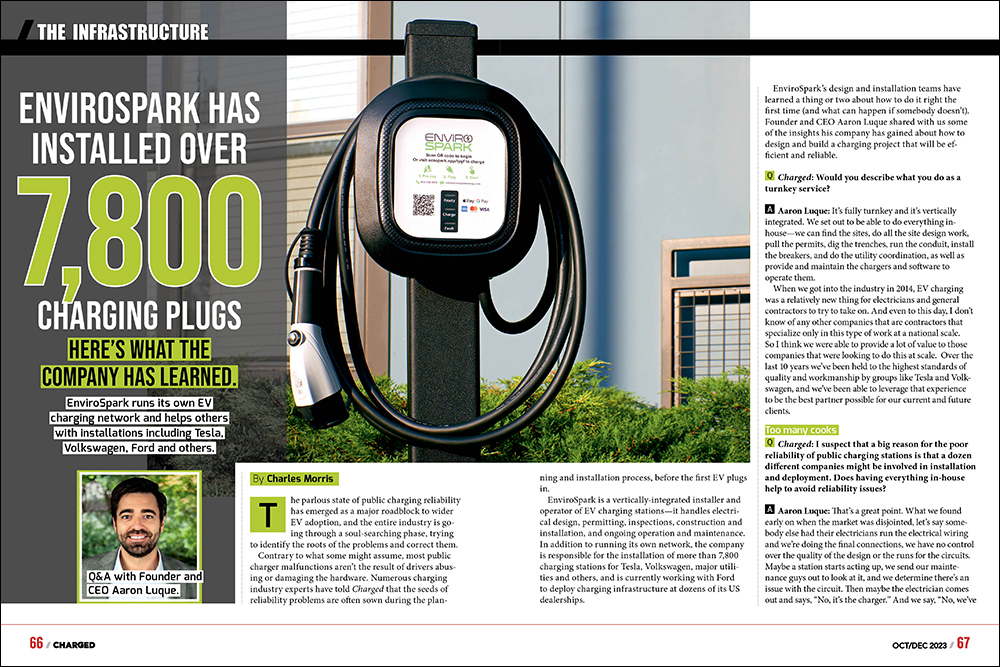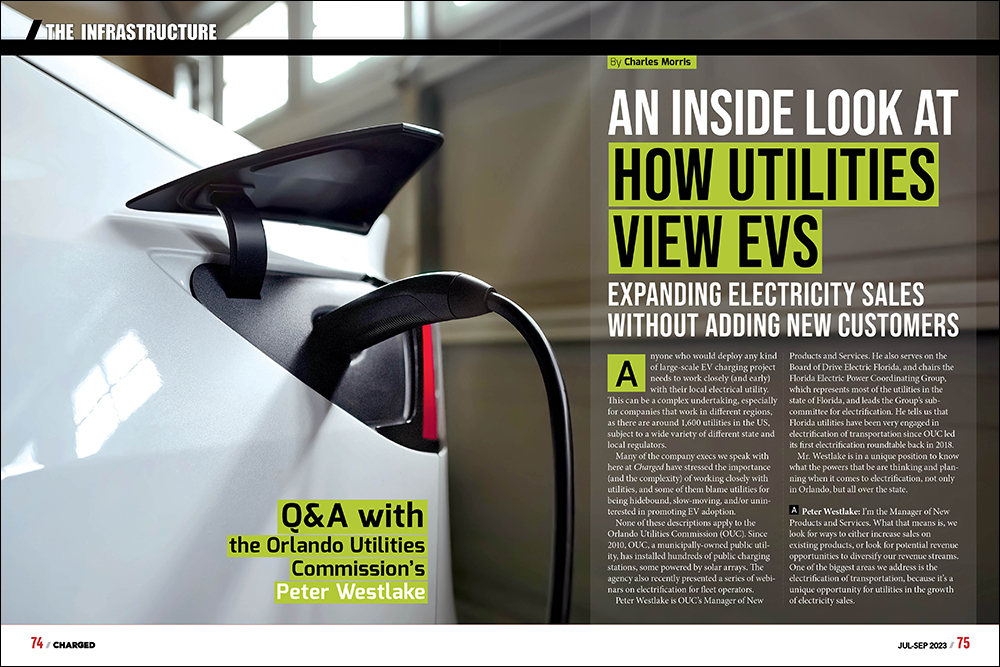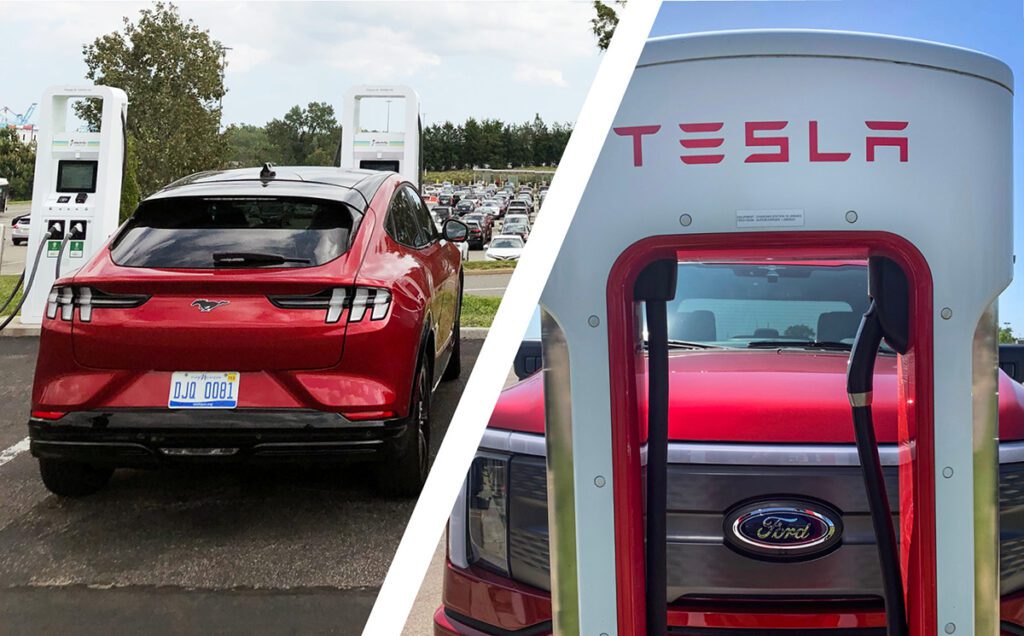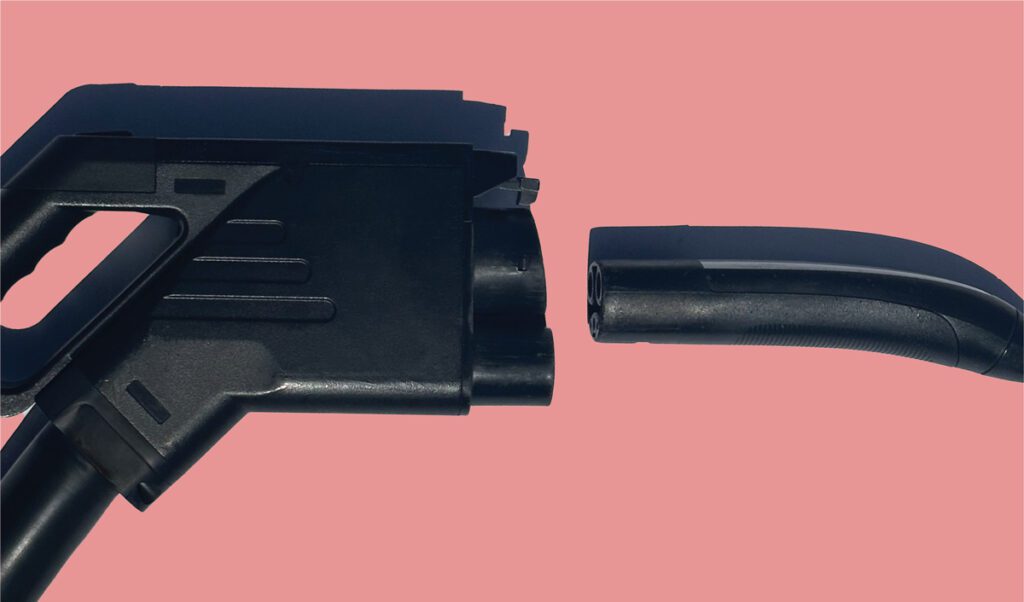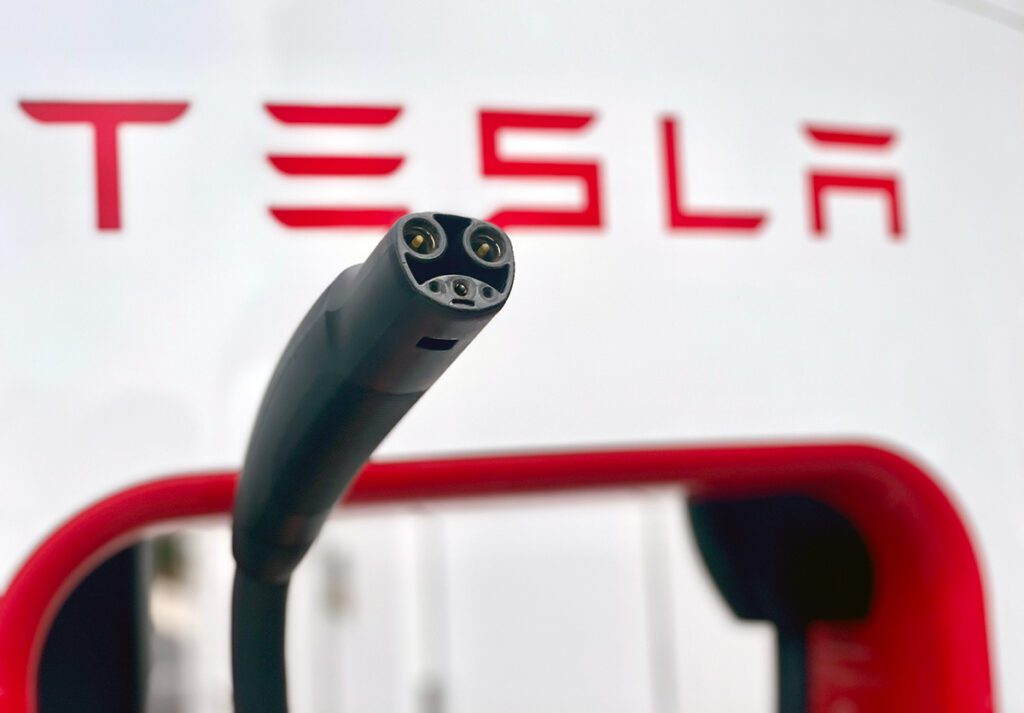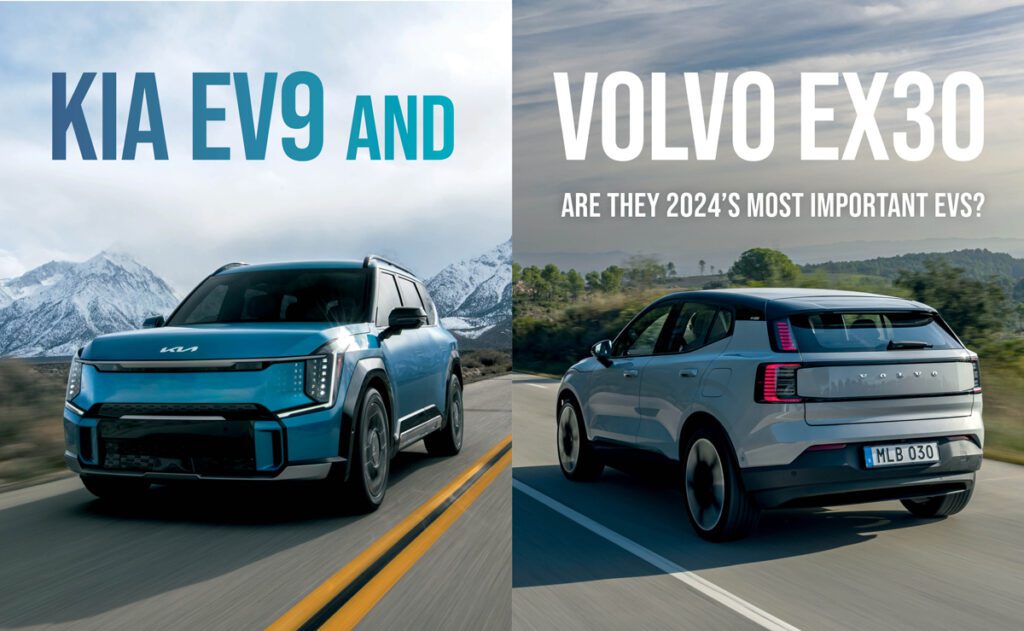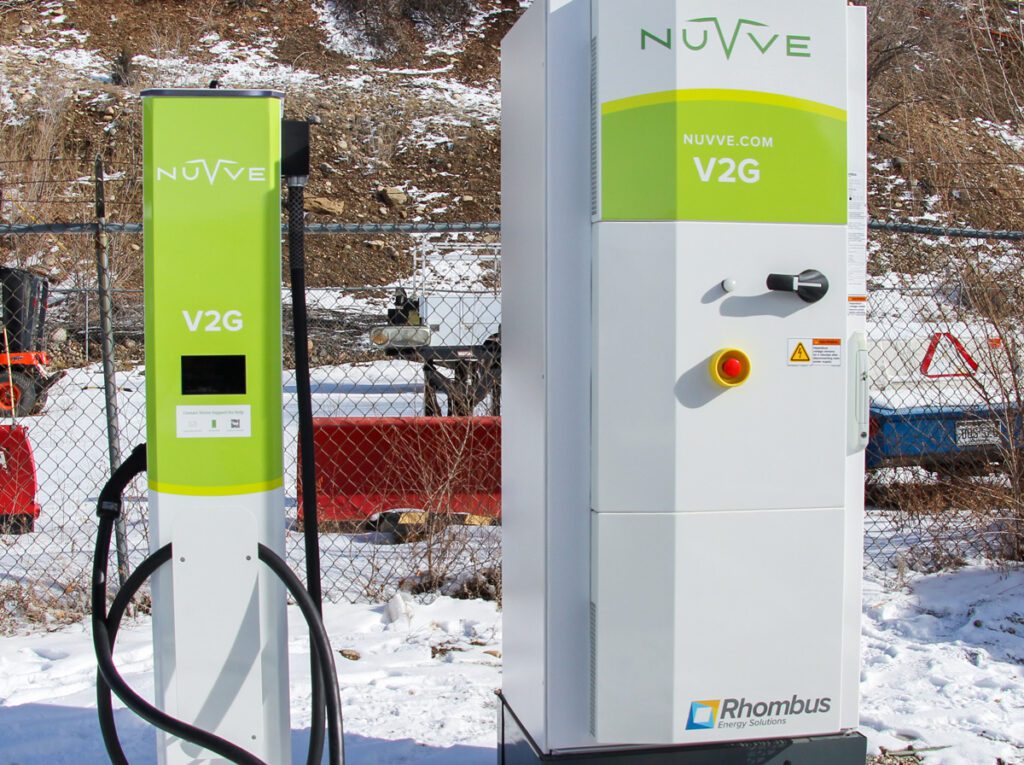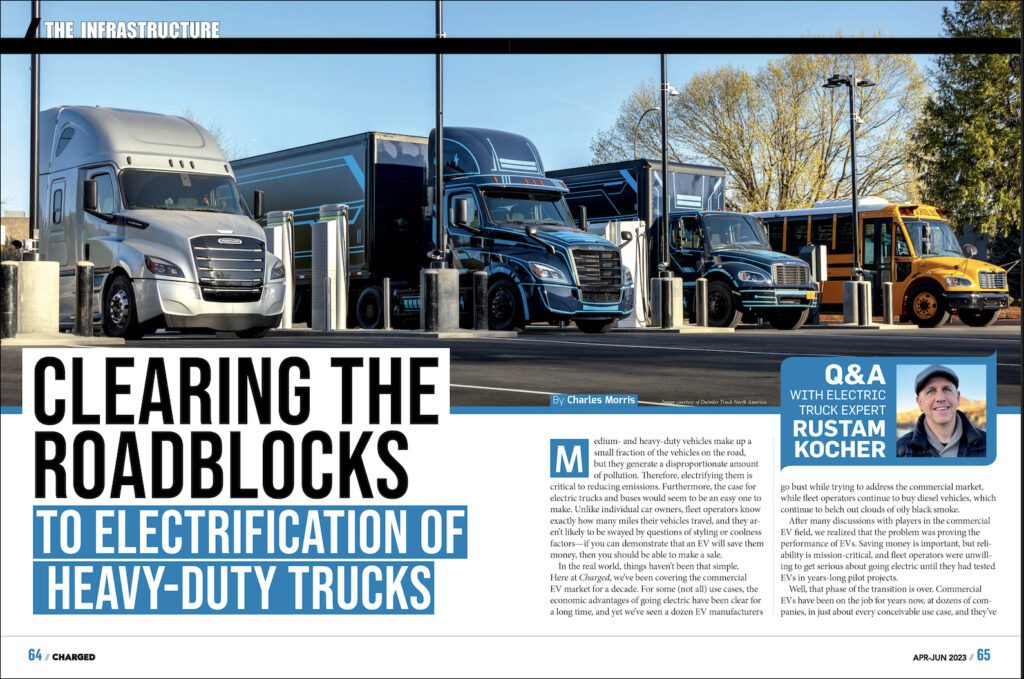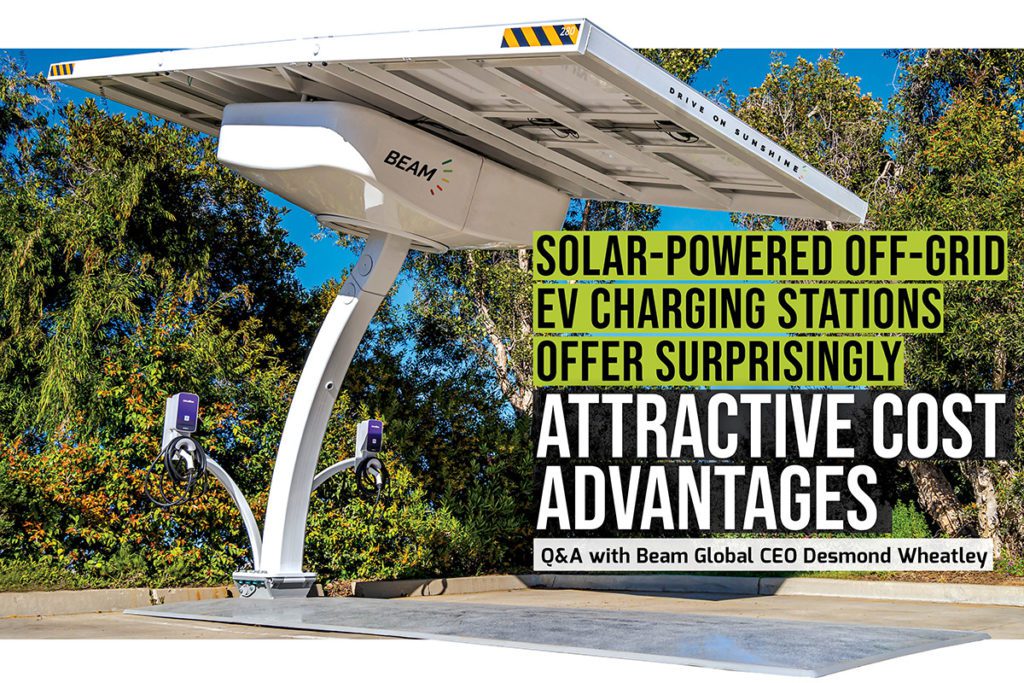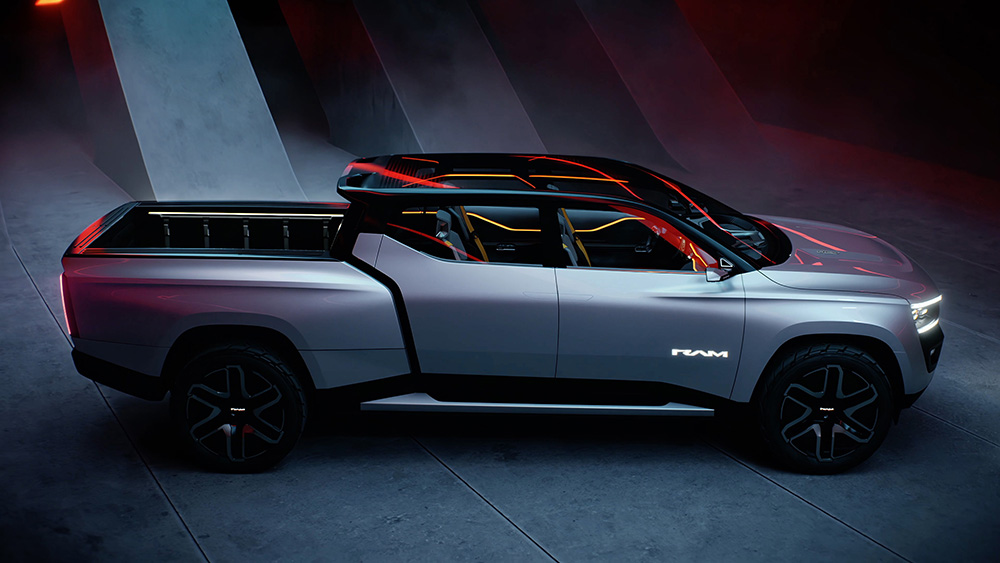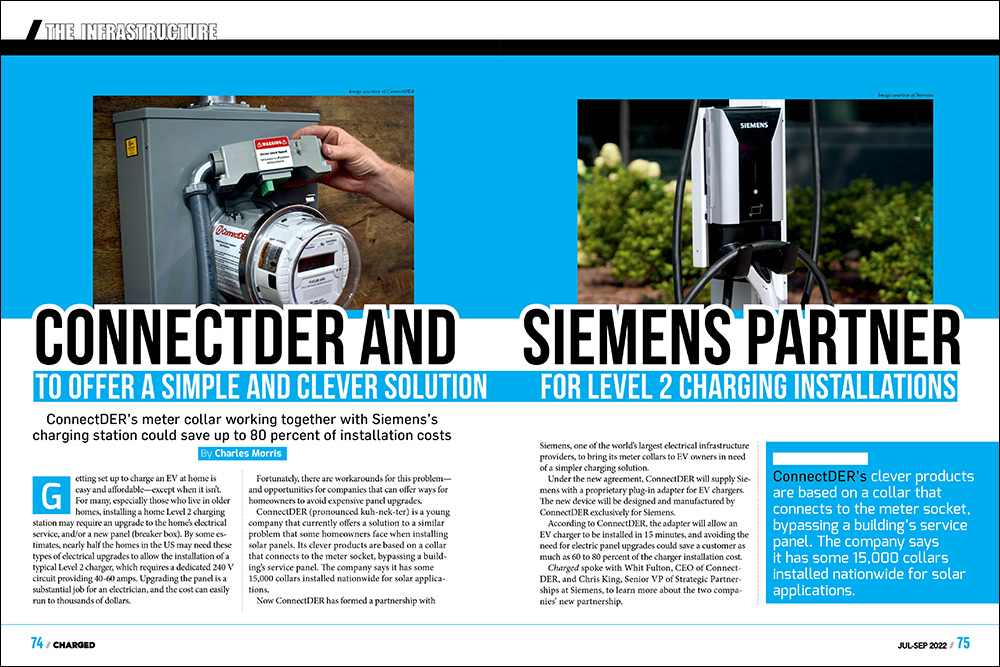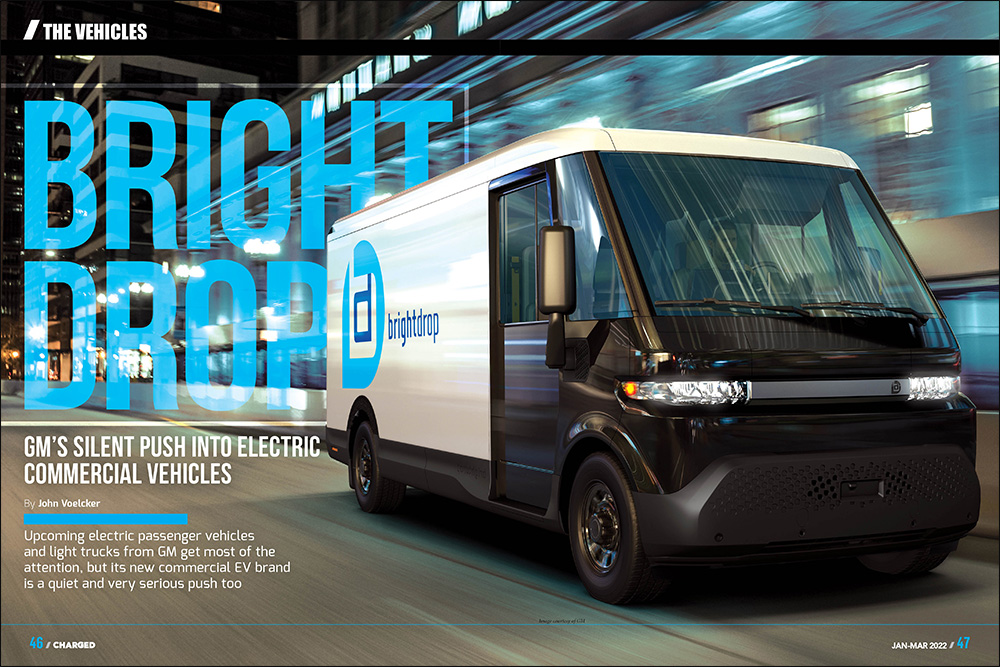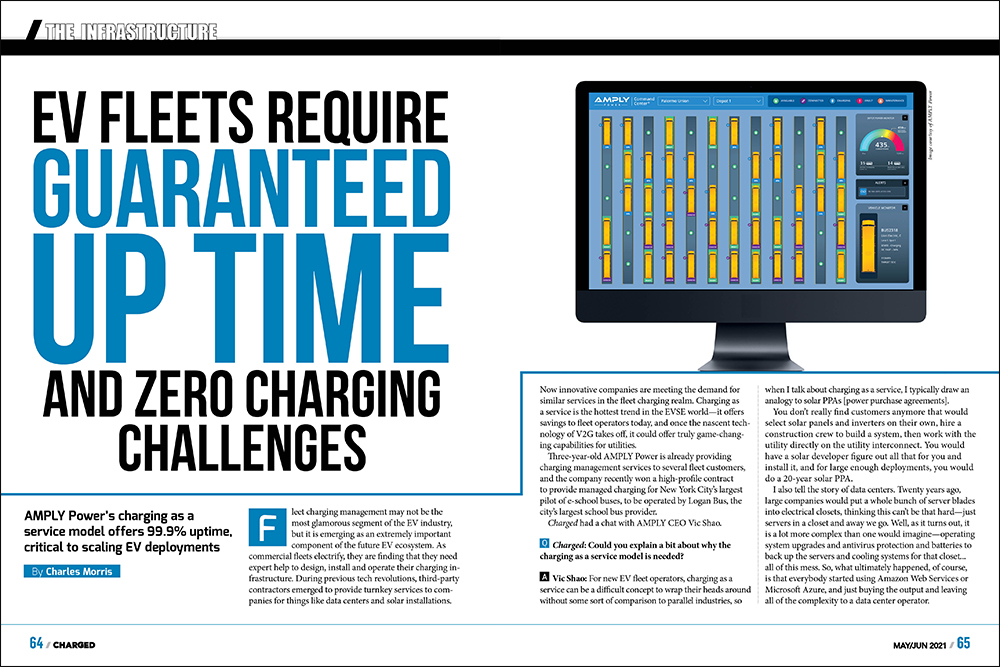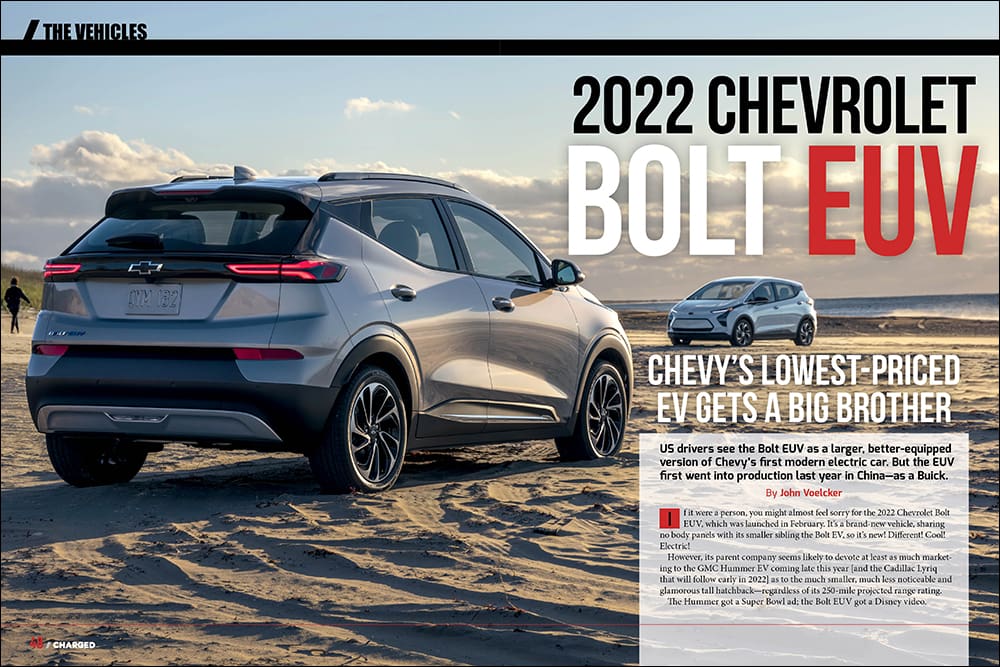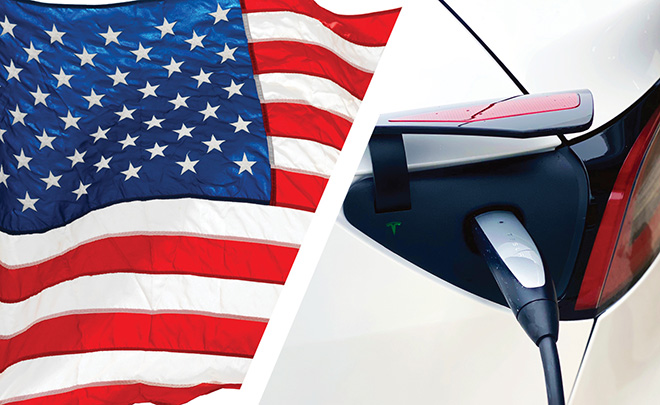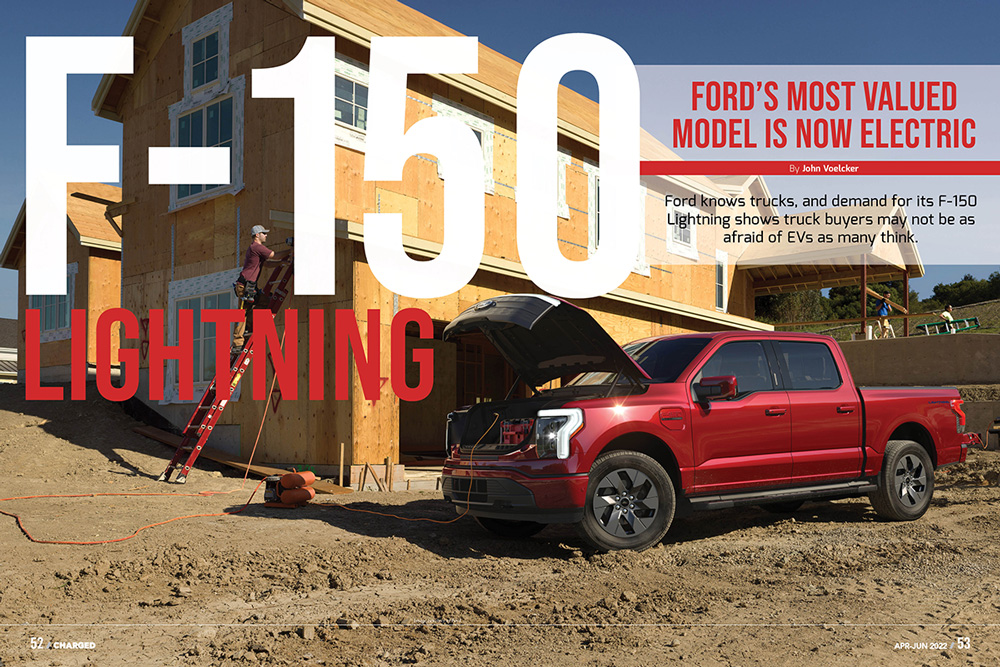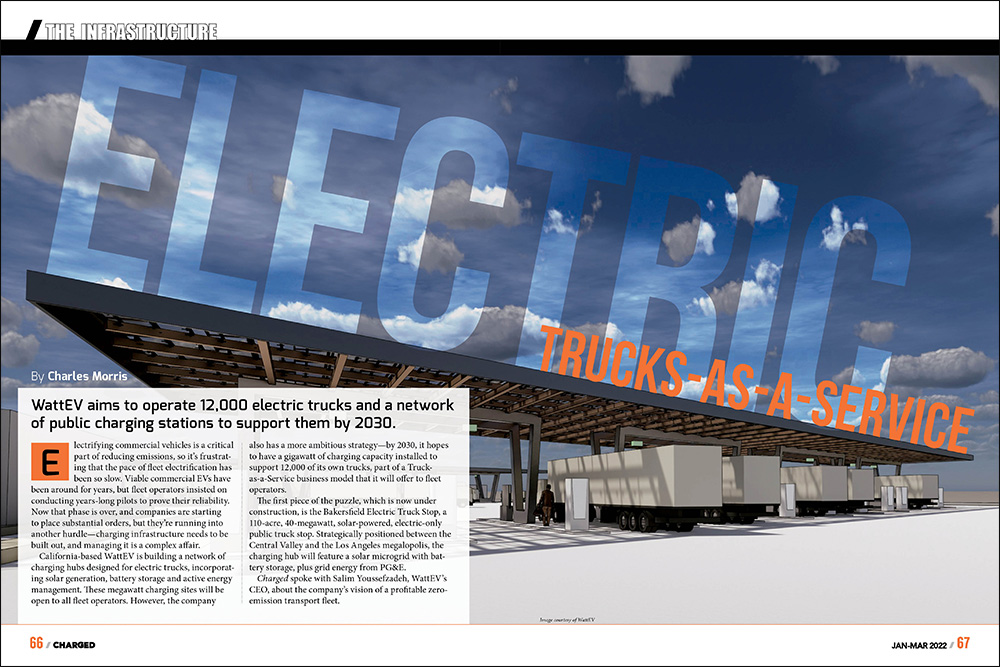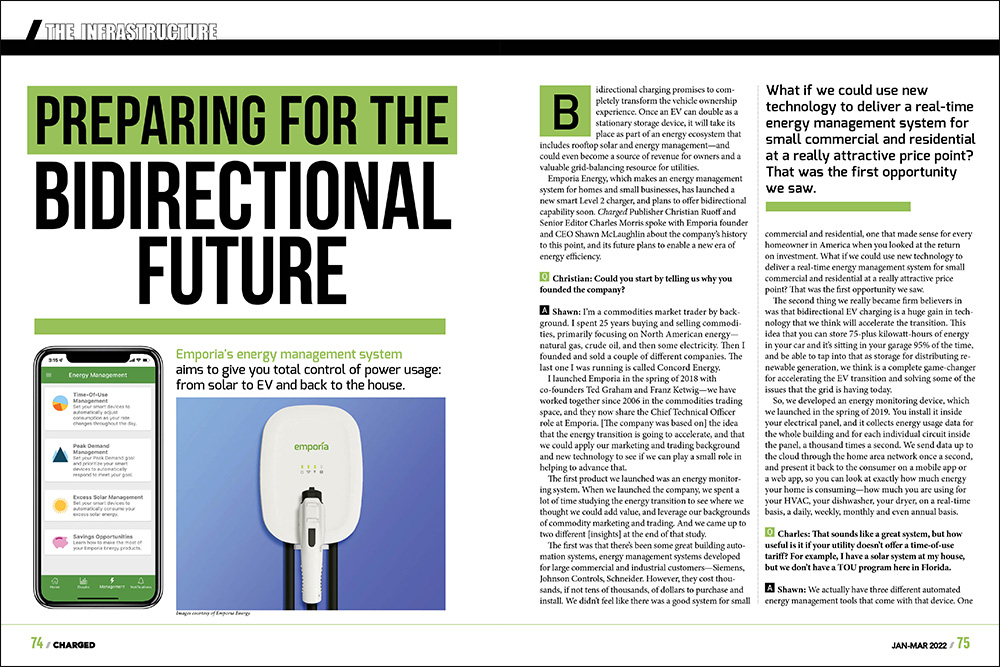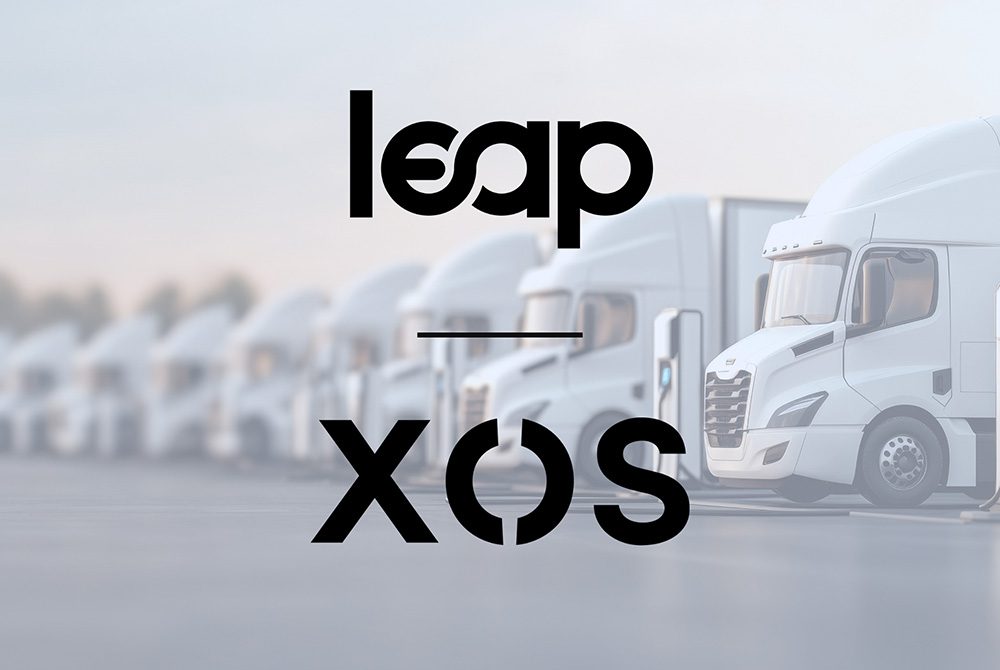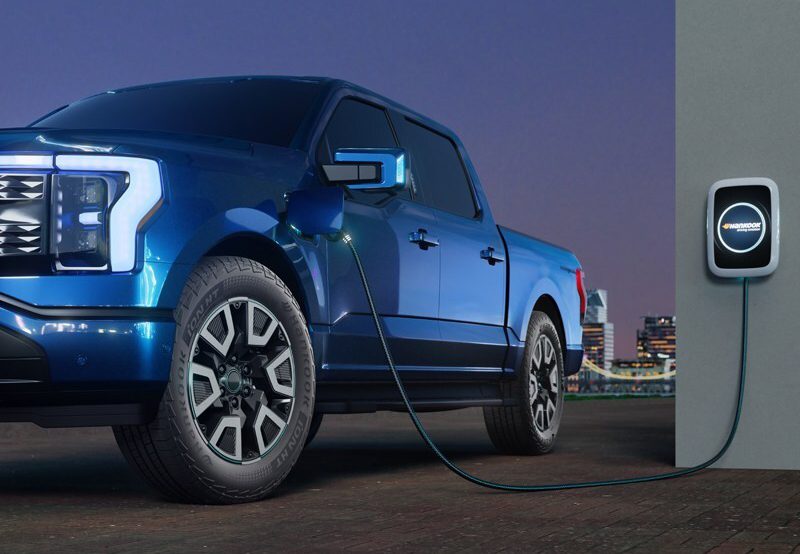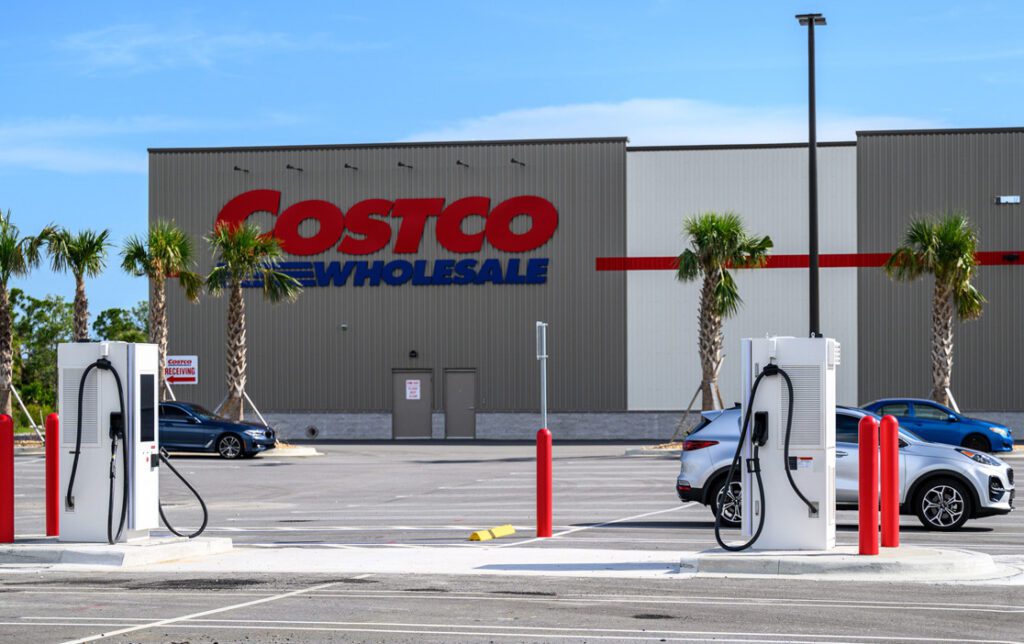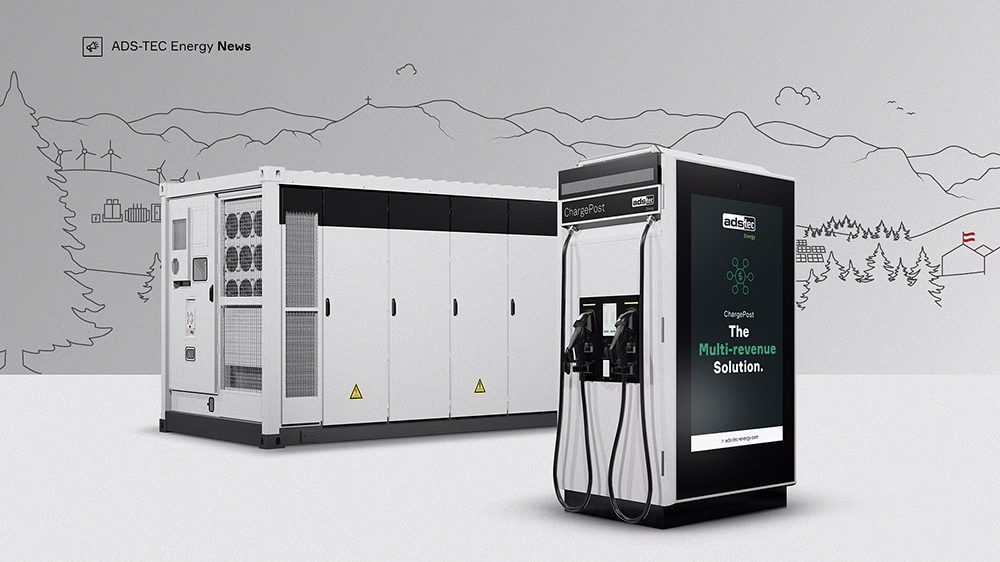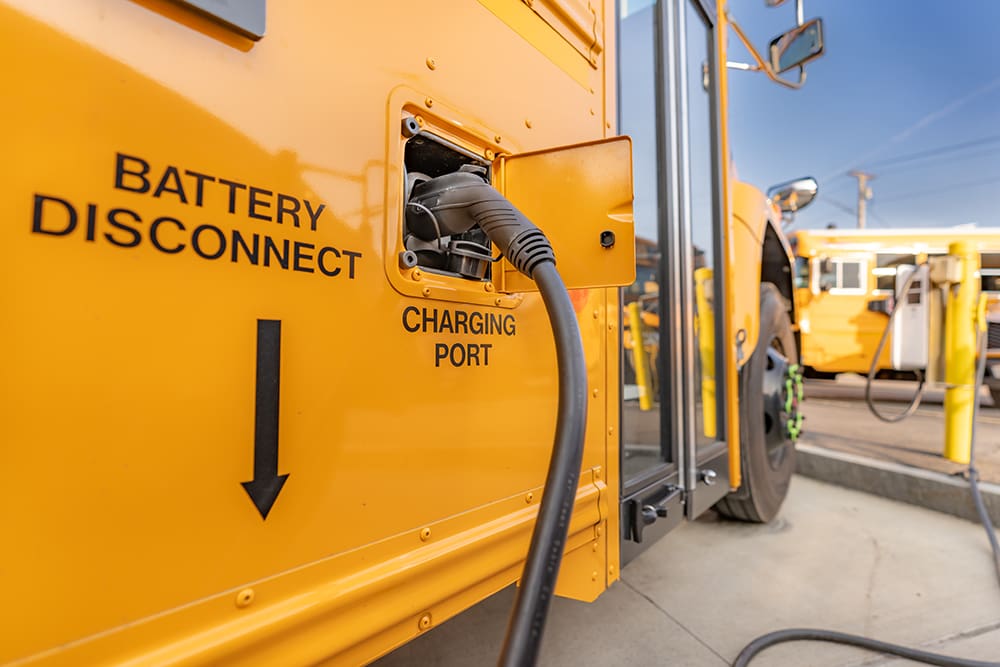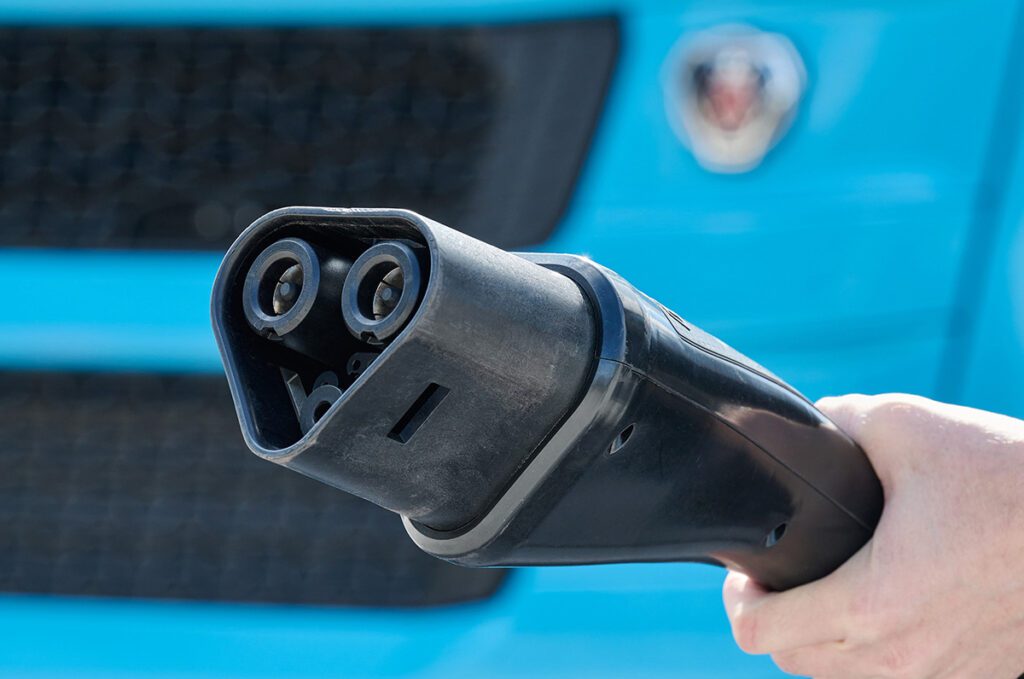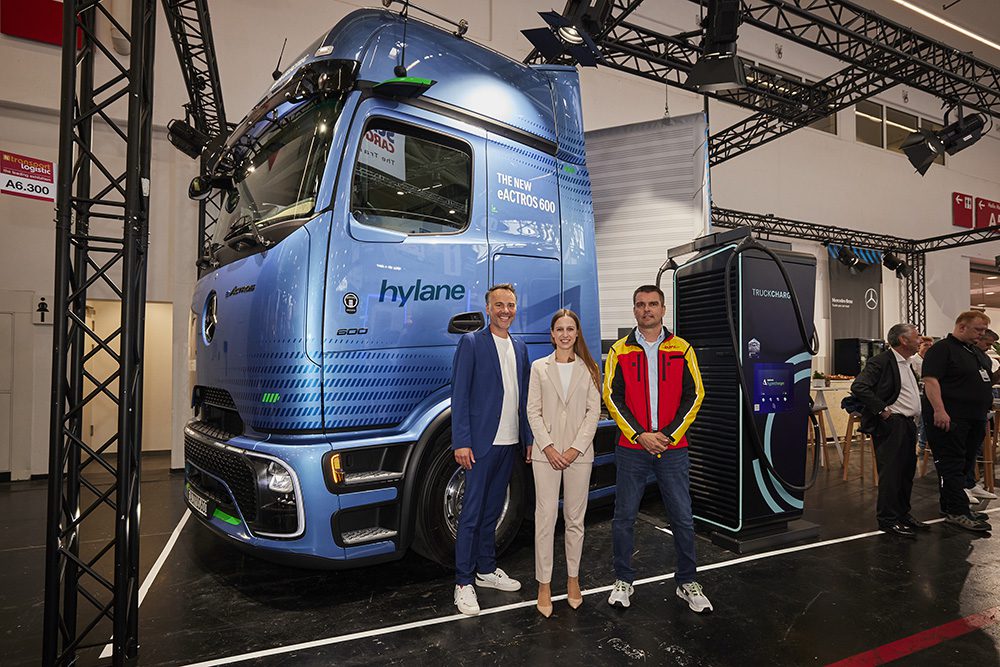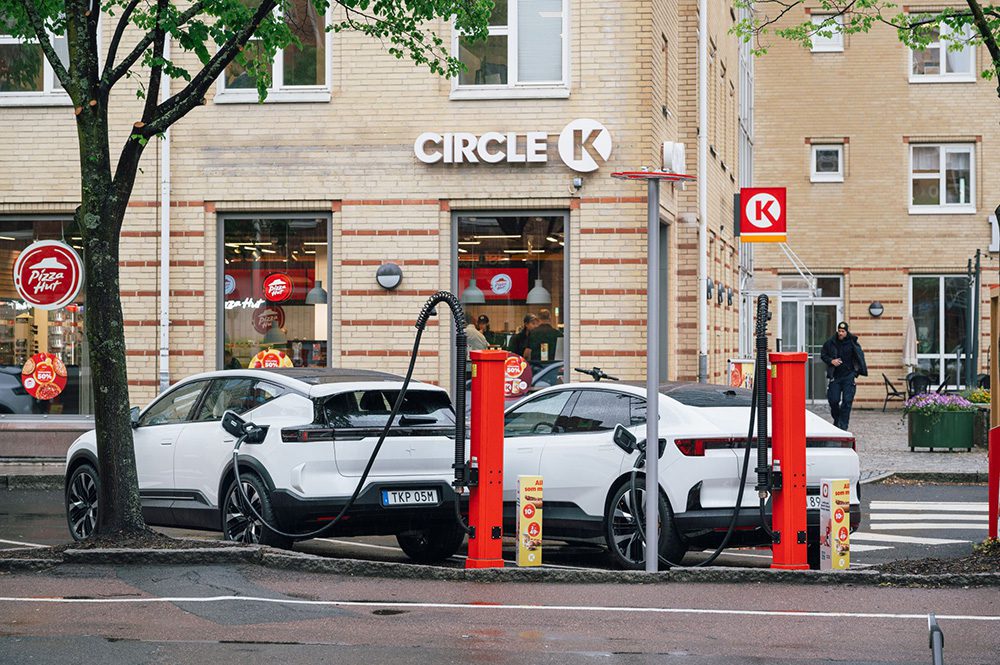A straightforward look at the EVSE market from the charging pioneers at ClipperCreek
In a charging station industry filled with multinational conglomerates and 100-year-old automotive suppliers, the independent company ClipperCreek stands out. Relatively speaking, it has had a long history in the EVSE industry – a history that has shaped some definite views of the marketplace.

The three co-founders – Jason France, David Packard and Michael Rogers – have been designing and selling electric car charging equipment for over 19 years. They first shipped products in August 1994 from their original EVSE company EVI, which operated until 2003 when the EV market went away.
“We just kind of hid in the mud for a while,” said Packard, now ClipperCreek’s President.

Around 2006, they started to hear discussions about the Tesla Roadster, Chevy Volt, Nissan LEAF and others. So, they decided to get the band back together and formed ClipperCreek. With a 10-year head start on modern charging technology, the company was able to hit the ground running, and supplied EVSE for early models in the new EV resurgence – like Tesla’s Roadster and BMW’s Mini E.
“Since then, things have gone quite well,” said France, ClipperCreek’s CEO. The company has shipped over 14,000 units from its Auburn, CA manufacturing facility since 2009 – not including the trunk chargers supplied directly to OEMs like Chevrolet, BMW and others through its partnership with Delphi.

ClipperCreek says it’s optimistic about the new EV market, but these guys have been around the block, so their attitude could be better described as pragmatic. “The market didn’t grow as fast as everyone had hoped. But in reality, we should be really happy with the growth that we’ve seen,” said Packard. “I’ve stopped waking up in a cold sweat, afraid that the automakers are going to pull out overnight, like they did in 2002. August 30th at 7am is when I got that fax. Not that I’m not sore about it,” he joked.
The company’s experience has formed no shortage of opinions about where the market is headed. “We have major competitors and minor competitors. A lot of them seem to be just waiting to see what is going to happen,” explained Packard. “We’re trying to do what we think is right for the marketplace. We feel pretty strongly and want to see the right things done. In some cases it’s not always us doing it. Sure, we’re trying to sell products. But even if we weren’t, we would still tell you our view and wish the right products were out there.”
The products tell the story
ClipperCreek believes that EVSE will continue to move away from the premium product realm, and that more and more customers will want simple chargers that are durable, with basic functionality, at the lowest price possible. Things like connectivity, LCD screens and complicated packaging all drive the costs up, so ClipperCreek doesn’t offer them.
“We think driving the cost of the EVSE down is something that has been largely overlooked,” said Packard. “We’ve seen a lot of outrageous prices, for both products and installations.”
The company focuses on providing maximum value and the lowest price tag. Building products that will last is key to that equation. “We found from experience that things really take a beating,” explained Packard. One of the biggest benefits of working with Delphi to become a supplier to the OEMs is the rigorous testing process that the products went through. The automakers thoroughly qualify each and every part that goes into their vehicles, and the Level 1 chargers included with cars are no exception. “Our products were pretty good to start with,” said France. “To get into the automakers’ supply chain was a two-year process. Two years of straight torture. Now they’re practically bulletproof.”
The focus on durability also extends to the company’s commercial charging stations. “The real world isn’t that nice,” said Packard. He thinks public charging stations that feature things like LCD screens are asking for trouble. The theory is that any EVSE out on the street should be as tough as phone booths were (when you could find one). While the phone in your house is fragile, you could take a bat to the one in the booth. Sure enough, ClipperCreek recently made a video of its employees breaking a bat and a hammer on its newest HCS product. “It’s really tough, and that’s the value,” said Packard. “It needs to last at least as long as your car, and to do that it needs to be straightforward and reliable.”

To reduce costs, the company makes simple chargers, but it also focuses on making them simple to install. While some manufacturers offer residential chargers with 10- or 12-foot cords, all of ClipperCreek’s units come with 25-foot cords. Packard argues that a 10-foot cord will often require an electrician to add 15 more feet of conduit to install it in a useful location, inadvertently affecting the total cost of the unit. With a 25-foot cable, the EVSE can be installed virtually anywhere in the garage and still reach two cars. “You can put it right near the circuit panel, within an arm’s reach,” he explained.
ClipperCreek’s products are designed to require no assembly. “You just screw it to the wall,” said France. “Then, plug it in or connect the three wires in a junction box. You don’t have to use mounting plates or take the unit apart and put it back together. The electrician is doing that at $100 per hour – trying to figure out how to build it like it’s an IKEA table.”
The company encourages customers to use their local electricians, and suggests that there is too much overhead associated with the OEM-specific installation plans. “If you want a trained installer, NECA-IBEW has a great EV program with no overhead associated,” said Packard. “It’s about $100 per hour and they’re in and out.”
The products are competitively priced to sell. In November, the company announced that its 20 A Level 2 LCS-25 product, which starts at $495, is now available with a choice of NEMA plugs (L6-30, 14-30P, 14-50P or 6-50P).
It’s planning a higher power model line as well – rated for 30 A, 48 A or 64 A continuous – all with a 25-foot cord and starting at $599. “It’s partially future-proofing if someone wants a residential unit in that realm,” said Packard. “We suspect that the residential market will basically stick to the 30 A range, except maybe for Tesla owners buying a second car. But there are a lot of the trucks – Via, Smith, EVI – that have higher power onboard chargers. And many are advocating for higher power public charging to push the automakers to increase the size of the onboard chargers.”
Connectivity, networks and charging for charging
ClipperCreek believes that networking should be done through smart grid-connected charging stations, because the utilities have already spent billions of dollars building the communications infrastructure. “It makes so much sense to piggyback on that,” Packard told us. With three generations of smart grid-connected stations, and a new partnership with Itron to implement revenue-grade metering technology in its EVSE, the company has been involved in multiple smart grid pilot projects.
For commercial customers interested in pay-to-charge stations, ClipperCreek uses Liberty Plugins’ Syncroness code system. It’s pay-by-phone-enabled, and doesn’t require any cellular or Wi-Fi connection inside the EVSE itself. “You walk around with a network in your pocket, why do you need to pay for another one?” Packard asks. “Subscription plans and networks add so much unnecessary cost to the marketplace.”
With its point-of-sale stations, ClipperCreek tries to get the cost of charging as close to actual energy cost as possible. “Adding on the layers of a network’s bureaucracy is going to raise the price, and then no one will use them. Based on the EV Project data, we can see that when it’s free, it’s used. When we start charging for it, it’s used a lot less.” Packard thinks that for the most part, drivers will continue to charge at home and, as the vehicles proliferate, utilities are going to need to control them to manage peak usage. “The cost is going to be borne by the utilities if they don’t control the stations as they become more and more popular.”
If you’ve ever seen Packard speak in public, you know that he isn’t afraid to share his opinions on the market. At the Plug-In 2013 conference in San Diego, he participated in a lively panel debate about public charging. In front of a large crowd of charging industry experts, he expressed a few concerns with the business models of some of the companies represented in the room:
The thing that scares me about networks is that we’ve put over a billion dollars into them and have seen two spectacular failures. It could be due to mismanagement, but really I think one of the things we’re learning is that the network marketplace is tough because of the competition. And the competition isn’t from other networks.
Number one, electricity is a commodity. It’s really cheap. How do you squeeze more value out of that? Basically, it comes down to: Are the features worth the cost?
You also have the credit card industry, which is really mature. The cost of processing is really low. So, why not take a $1,000 EVSE and put a $500 credit card processing packet in front of it? And those are low volume costs.
 More competition is from home charging. We’re basically leaving home with a full tank every day. Do we really need a public charger? I’m an infrastructure guy and I want it all over the place, but how much money are we going to put into it if we’re leaving home every day with a full tank? If we’re charging at work also, do we really need to charge at Walgreens? We’re learning now that as we start charging for charging, people stop using it. It’s a scary marketplace because if the price goes up, it doesn’t get used.
More competition is from home charging. We’re basically leaving home with a full tank every day. Do we really need a public charger? I’m an infrastructure guy and I want it all over the place, but how much money are we going to put into it if we’re leaving home every day with a full tank? If we’re charging at work also, do we really need to charge at Walgreens? We’re learning now that as we start charging for charging, people stop using it. It’s a scary marketplace because if the price goes up, it doesn’t get used.
What is the business model that works? What will the public sustain? Is it twice what they pay at home? It almost has to be subscription-based because nobody is going to pay excessive amounts per charge. In my mind that’s the only way it could possibly work, because if we put the charging stations in with the perception that businesses are going to be built around usage, it’s going to fail. If we charge enough money to make it worthwhile then no one will use it at all, and we hurt the industry.
The industry doesn’t need any more failures, we need people to be successful. We need public charging to be market-based. Hopefully the retail end of the world will start putting charging stations in and see a real value to having people plugging in and then shopping.
He also took a few swings at publicly funded “corridor charging” projects:
If we promote that you can drive from San Francisco to LA in a LEAF, people are going to buy the car thinking you can and then have a bad experience. In reality, no one is really going to do that.
All through our lives we’ve handled different missions with different vehicles…It seems like we’re trying to make these cars work for every application. I have a truck and a Volt. There are certain things we use the truck for and certain things we use the Volt for.
What’s great is the breadth of product we’re getting on the market now…If you do go from San Francisco to LA you can buy a PHEV and make that trip a very pleasant experience, not stopping all the time. You have to pick the car for the mission that you have.
 Quite frankly, we put a lot of money into corridor charging and I think it’s just ridiculous. If you’re driving from San Francisco to LA in a LEAF, what is wrong with you? Maybe once to say you did it, but overall it doesn’t make a lot of sense. If my kids make me stop every hour to use the bathroom on a four-hour trip, I’m mad.
Quite frankly, we put a lot of money into corridor charging and I think it’s just ridiculous. If you’re driving from San Francisco to LA in a LEAF, what is wrong with you? Maybe once to say you did it, but overall it doesn’t make a lot of sense. If my kids make me stop every hour to use the bathroom on a four-hour trip, I’m mad.
If you commute 30 miles, 250 days a year, you take the LEAF. Perfect application. And this is what a lot of people are doing.
Speaking to Charged, Packard and France expressed feelings that privately funded corridor charging is a different story, calling Tesla’s supercharger network “an amazing piece of technology.”
“Tesla is spending their own money, not hundreds of millions in government funds,” said France. “That’s their choice as a private entity, and that’s great.”
ClipperCreek also supplies EVSE to Sun Country Highway, which has installed Level 2 chargers every 100 to 200 kilometers along the Trans-Canada Highway. The principals of that project have advocated against using public funding for Canadian charging projects, in part “because of the mess we made down here,” said Packard.
 Although the ClipperCreek founders think many corridor charging projects are ill-conceived, they do see value in DC fast chargers. “Around the city, I think it makes every bit of sense,” said Packard. He thinks most fast chargers will rarely be used, but they will increase people’s confidence about driving 80 miles a day, which is very significant. “There are so many applications that we can tackle in the city, and then go after the long drives five years from now when you have 250 miles of range on a $4,000 battery pack. That evolution is going to come naturally over time. Let’s look for the low-hanging fruit instead of trying to promote EVs for a use that is going to give people an unsatisfactory experience.”
Although the ClipperCreek founders think many corridor charging projects are ill-conceived, they do see value in DC fast chargers. “Around the city, I think it makes every bit of sense,” said Packard. He thinks most fast chargers will rarely be used, but they will increase people’s confidence about driving 80 miles a day, which is very significant. “There are so many applications that we can tackle in the city, and then go after the long drives five years from now when you have 250 miles of range on a $4,000 battery pack. That evolution is going to come naturally over time. Let’s look for the low-hanging fruit instead of trying to promote EVs for a use that is going to give people an unsatisfactory experience.”
Workplace
Like many others in the space, ClipperCreek has seen a rise in interest in workplace charging. However, the company reports that a lot of people are wrestling with whether or not the IRS will rule that free charging provided by employers is a taxable benefit. Such a ruling would complicate the charging-at-work scenario and it’s a real concern for businesses. For example, what will be the tracking and reporting requirements? “If I buy basic chargers for my employees today – without any metering or access control – will I have to replace them with ‘smarter’ chargers if the IRS decides it’s taxable?”
A few EV industry organizations have asked the IRS to make a ruling soon, hoping to eliminate people’s concerns. GM has recently stated that it believes charging should not be considered a taxable benefit, and ClipperCreek agrees. “I think that then we will see a lot more workplace charging, and it will be free to the employees – much like coffee is,” said Packard. “Even though everyone doesn’t drink coffee, they provide it for free.”
ClipperCreek advocates for Level 1 at the workplace. It argues that to take full advantage of a Level 2 EVSE asset, there is a need to move cars around during the day – affecting productivity – because the vast majority of commutes can be recharged in three hours or less with Level 2. With Level 1, commuters can recoup about 25 to 30 miles while staying plugged in all day. Also, most facilities don’t have enough power for lots of Level 2 charging. Alternatively, they could wire up for Level 1 and offer twice the charging without upgrading panels. “The original installation doesn’t have to creep up to way beyond what anyone can afford,” said France. “Practically any building can support four stalls at Level 1.”
“Another big complaint we hear is that people are taking the charging stations even though they only have a 5 or 10 mile commute,” explains Packard. “They’re not the ones who need it, so we have to manage that somehow.”
Oddly enough, one of Packard’s suggested fixes is not to use his products. “You can buy a Level 1 station, like the hardware we offer, or even just an outlet.” Outlets are cheap and simple to install, and they enable drivers to use the EVSE cord set that is included with the purchase of every plug-in car.
Hearing a company’s president point out that its products might not be necessary is a little strange, yet refreshing. But Packard and ClipperCreek have a clear vision of the EVSE market and where it’s headed. “We need to get the prices down and more people in the cars. That should be the focus. Everything else will take care of itself.”
This article originally appeared in Charged Issue 11 – DEC 2013






